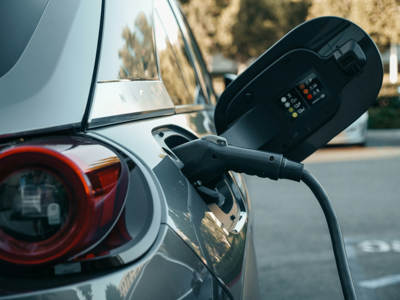A new commentary in the journal Nature by UC Santa Cruz Associate Professor of Economics Peter Christensen and co-authors recommends how to collect and apply evidence in order to achieve the greatest possible impact from recent investments in decarbonization in the United States.
Over the past three years, the U.S. has allocated significant funding through the Inflation Reduction Act and the Bipartisan Infrastructure Law to promote policies that will accelerate the country’s transition to a low-carbon economy. State and local governments will be largely responsible for implementing these policies and will face difficult choices about which programs to prioritize and how to design them to maximize participation by households and businesses.
Christensen and co-authors argue that this is a critical moment to embed impact evaluation—a methodological toolkit designed to provide rigorous evidence on the causal effects of public programs—into the rapid escalation of decarbonization efforts.
“My research team has been working on the evaluation of decarbonization programs in the residential buildings and transportation sectors for the past decade, and I have been astounded by the thin evidence that typically exists on which programs are working and which are not,” Christensen said. “The methodological tools for better evaluation are available, but have not yet been widely deployed. Now that these two laws are channeling unprecedented levels of public funds into decarbonizing the world’s largest economy, we really need to know which programs are effective at reducing greenhouse gas emissions and whether they help achieve equity targets.”
Some of the recommendations that Christensen and co-authors put forth in the article for include the following:
- Build evaluation capacity: Develop a harmonized data-collection and monitoring infrastructure to guide decarbonization programs.
- Conduct independent analysis: Prioritize rigorous independent analysis by third-party researchers to ensure the credibility and transparency of evaluations.
- Prioritize collaboration: Share the outcomes of different interventions and coordinate policy efforts.
- Properly incentivize behavior change: Carefully target incentives to only the consumers and firms that would not have taken action without them.
- Quantify spillovers: Use evaluation data to determine if and how funding creates industry-wide learning that drives down costs and speeds adoption of new technologies.
- Evaluate trade-offs: Identify any potential indirect effects of programs on industrial pollution and how subsidies and tax credits might either reduce or worsen inequalities.
The article and its recommendations stem from efforts Christensen has been leading since 2022 with MIT’s Poverty Action Lab (J-PAL) to coordinate among economists and social scientists on experimental evaluation of decarbonization programs. One of the first goals of those efforts was planning for how to develop a "science of decarbonization" that could guide U.S. policy implementation through 2050. The article lays out an agenda for that work.
In the next phase of this effort, the team is now building partnerships between state/local governments that are implementing decarbonization programs with Inflation Reduction Act funds and research teams that have the capacity to evaluate them.
“If we can scale this and several other related efforts over the next decade, I believe that we can help to define the optimal path to net zero emissions,” Christensen said. “Rigorous evaluation of the impact and cost-effectiveness of decarbonization programs will be at the core of evidence-based decisions on which types of programs to scale and how to design them for maximum impact on greenhouse gas emissions.”




